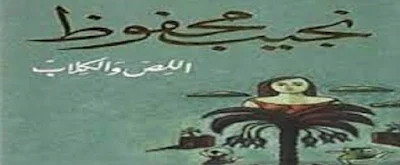Stream of Consciousness and Interior Monologue in “The Thief and the Dogs”
Introducing his translation of “The Thief and the Dogs”, Trevor LeGassick appreciated Naguib Mahfouz; saying that Naguib Mahfouz has enjoyed a success in literature more than any other writer of the modern Arab world and his fame in the Middle East is unrivaled.
Stream of Consciousness and Interior Monologue in “The Thief and the Dogs”
According to Trevor LeGassick, this novel marked distinct changes from Mahfouz’s earlier work through its subject treatment and style. It is a psychological impression-based novel with the speed of a detective story. In this novel, Mahfouz uses the stream-of-consciousness technique for the first time to show the hero’s internal conflicts and his suffering. The protagonist was consumed by bitterness and a desire for revenge against the individuals and society who betrayed him and brought about his inevitable damnation. It is an amazing work giving the readers an extremely accurate vision about what the sick hearted people do and how the embittered mind doomed to self-destruction. Finally, the readers understand the protagonist’s argument and come to the values and structures of the Egyptian society. (LeGassick, 1984, p. 5-9)
The stream of consciousness techniques and multiple narrators
The stream of consciousness techniques and multiple narrators were used in works like Al-lis wa al-kilab (1961, The Thief and the Dogs) and Miramar (1967), while Al-maraya (1972, Mirrors), Layali alf layla (1982, Arabian Nights and Days), and Rihlat ibn Fattouma (1983, The Journey of Ibn Fattouma) drew inspiration from medieval Arabic biographical dictionaries, the Thousand and One Nights, and The Travels of Ibn Battuta, respectively. Mahfouz also returned to ancient Egypt in Amam al-‘arsh (1983, Before the Throne), in which he put on trial, before Osiris, Egypt’s rulers from ancient times down to Nasir and Sadat, and Al-‘a’ish fi al-haqiqa (1985, Akhenaten, Dweller in Truth). Mahfouz’s last major works were Asda’al-sira aldhatiyyah (1994, Echoes of an Autobiography) and Ahlam fatrat al-naqaha (2005, The Dreams of Departure). (Logan, 2011, p. 61-62)
Modernize Novels’ Traditional Forms
Some critics say that Adrift on the Nile and The Thief an the Dogs are an attempt to modernize novels’ traditional form such as what took place within the framework of the European novel. The stream of consciousness helps the writer to uncover some of his own ideas and gives him some safer status to criticize the political regimes or laws. (al-Ghitani, 2007, p.108) In “The Thief and the Dogs”, the stream of consciousness technique dominates the novel from the beginning to the end. The action takes place and the plot develops through the consciousness of Saeed. So, the events go on by means of the use of various aspects of this technique instead of through straightforward description. The novel opens, the readers are placed in the mind of Saeed Mahran, the thief who has just been released from jail. Through his consciousness, the readers are given glimpses of his past, most of which comes in the form of evoked reminiscences. Through those reminiscences we learn fully about his relationships with others, of how his happy life was threatened and ended by whom he thought his best friend and how he was betrayed by his wife. There were also some glimpses of his daughter Sana, but these reminiscences and flashbacks were not arranged chronologically. (Elyas, 1979, p. 19-20)


